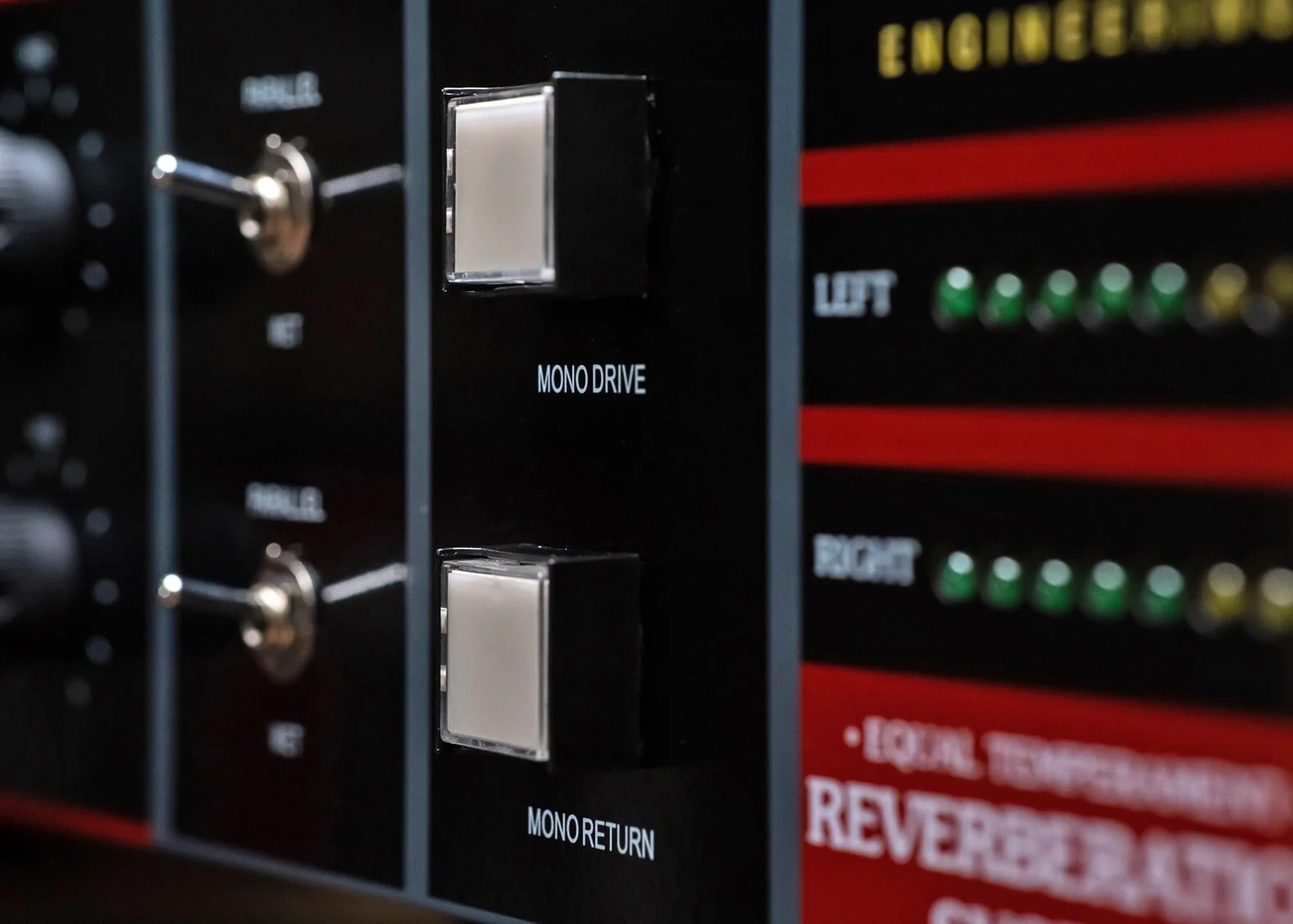XL-305R EQUALLY TEMPERED STEREO REVERB
XL-305R EQUALLY TEMPERED STEREO REVERB
SPECIAL ORDER ONLY: PLEASE ALLOW APPROXIMATELY 6-8 WEEKS FOR SHIPPING.
Please contact to make a special order
Great handmade gear takes time .. though not too much time!
___________________________
FREE PLUGIN WITH PURCHASE OF HARDWARE UNIT
___________________________
FREE Shipping within the contiguous United States! International Shipping available during checkout!
**HASSLE-FREE 2-YEAR WARRANTY INCLUDED!
**FREE PATCHRAT PRO SUBSCRIPTION INCLUDED WITH EVERY PURCHASE!**
___________________________
WELCOME TO THE XL-305R FROM AUDIOSCAPE
ON SALE FOR A LIMITED TIME!
A ground breaking design, 12 springs, all tuned together to make the Perfect Echo Chamber.
The XL-305R has its roots in the all analog XL-305 Spring Reverb from the 1980's. It’s been a Secret Weapon reverb over the years that has gained cult-like status. Unlike many spring reverbs, this Spring Assembly has 12 springs tuned together making it equally tempered, very similar to opening the lid of a piano, holding the damper open and singing into the strings . Working out from this core idea, we re-imagined the rest of the design from the ground up, from the electronics and spring decay times, to modern workflow and aesthetic improvements. With the direction of Wayne Kirkwood(XL-305 Original Designer) and 4 years of R & D, we were able to bring this GROUNDBREAKING design from the last century into the modern century. Simply put, we are incredibly proud to bring this to market.
The perfect balance of simplicity and flexibility round out the options of this verb. Here's a feature rundown from left to right:
Features:
2U, with an International external power supply for best noise specification
Input controls drive the signal to the tank, they have signal overload LEDs next to them to show when the signal is too hot going to the assembly.
Mix controls blends the dry signal with the wet signal.
4 band Center De-tent EQ controls per channel, for a multitude of tone shaping the wet signal.
Parallel/Wet toggle switches. Extremely handy to either have a full wet signal or parallel blend. With the parallel switches engaged and the mix controls maxed out the unit is operating at 50% wet signal.
Mono Drive Lighted Push-button Switch stereo links the channels together ,and makes it easier to bring the stereo image together
Mono Return Lighted Push-button Switch sends the signal from the Reverb assembly out, summed to mono
LED indicators on the right side of the unit allow the user to monitor the total output level of the Reverb itself
In short, it can sound more plate like with milder input settings, but can also do the spring thing if you drive it harder.
Attached is a Brief description of the History and Science behind the XL-305 design from Wayne Kirkwood, the original designer:
What makes the MasterRoom reverbs unique are the spring timings. They are "equally-tempered" following a log progression very similar to the musical scale.I have never seen another mechanical reverb system that worked this way - most get their diffusion from the material whether its a metal plate or the less-than-random delays of a single spring or 2 or 3 springs operating in parallel. The plate has a lot of diffusion - small numbers of springs don't and usually "boing."
I'm standing on the shoulders of its inventor William "Bill" Hall. The MasterRoom actually began life as an acoustic burglar alarm, a side project in the early days of MicMix. MicMix's first product was an industrial-strength field mixer in a deep drawn aluminum Halliburton case. They sold a few but it wasn't very successful. Thus the name "MicMix."The burglar alarm didn't work on the Doppler principle, it "pinged" the room, mapped the echo returns and then looked for changes. In order to test his research Bill needed a diffuse room which provided the most-difficult test. Bill was an amateur organist and knew about the Hammond spring system. Bill decided to use Hammond springs to provide his alarm's "test chamber." Using his math skills Bill determined that a log series would diverge and create a diffuse room. Once he pinged the "test chamber" he quickly realized what he had. The alarm project was dropped and the MasterRoom born by accident.
You can create a similar effect by opening the lid of a piano, holding the damper open and singing into the strings.
Bill after several years of success knew that digital reverbs would quickly come onto the scene and urged the co-founder, John Saul, to move in that direction. There was a lot of resistance and eventually Bill left the company. In the process I got handed several projects including the Time Warp, DynaFlanger and the XL-305.
Before Bill left he called me in his office one afternoon and taught me how to calculate spring timings. I still have his and my original notes and draft copies of the patent application. While waiting for digital to mature I built an XL-305 clone out of Reticon BBDs as a proof-of-concept. I left MicMix in the early 1980s to go into speech recognition and then onto studio maintenance doing a brief stint with SSL. By the early 1980s the Rev7 killed spring reverbs and MicMix was gone.
I'm glad we could bring a piece of it back.
FEATURED VIDEO DEMOS
Benny Grotto of Mad Oak Studios in Boston, USA compares the new AudioScape XL 305R to one of his studio's plate reverbs on a variety of source material.
“It’s really just an awesome, awesome tool….it blends so easily”
“the sense of space that the spring provides and this kind of sense of lushness and sustain, is so good.”
Colt Capperrune of Dark River Studios in Nashville, USA with an in-depth look at the AudioScape XL-305R
DOCUMENTATION:
HEAR IT IN ACTION!
USER PHOTOS:
Want to see your photo here? Share a photo on Instagram and tag it with #audioscapeaudio!




























